Week 7
This weekend was Sapporo Time again. I didn’t dwell too heavily upon it the first time, so this ought mostly to fall within the realm of ‘nouvelles’ as it were. As it was?
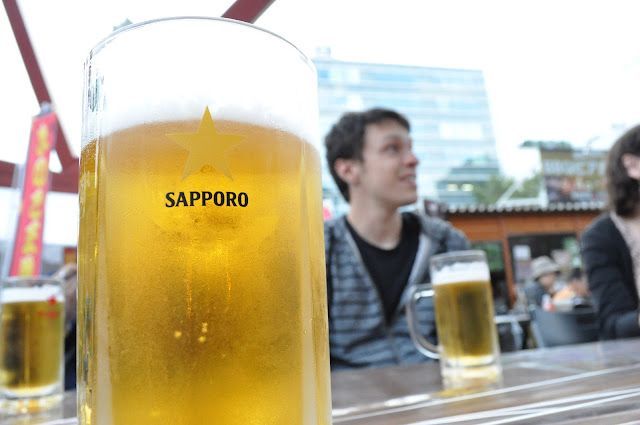
Saturday morning I rose with the sun and shoved my measly provisions into my backpack, hoping against hope that this would be the weekend expedition that I would get to use them, wishing against likelihood that fate would not come between my toothbrush, my deodorant, my sleeping bag, et al., and me. Shunta (the Japanese guy with whom I travelled to the Northern Welcome Party at Kembuchi some weeks prior) and I loaded ourselves into my undersized car, Penelope, pulling our knees up as close to ourselves as we could and pushing our seats back as far as they could go, and still my ankles crumpled uncomfortably against the accelerator. We trundled out into the countryside, Sapporo-bound, Penelope’s comically underpowered engine blitzing against the hills and the road and the air resistance and friction and all the physics trying to keep her at a reasonably idle speed. We spanned bridges and raced through tunnels, a speck on the landscape, going barely anywhere, outpaced by the clouds above. For all that the pavement seemed to speed by, every town looked more or less the same, every name on the signs just a little bit different from the last. Hokkaido, it seems, is notorious for its compulsion to name everything after either a river or a waterfall. Imagine, State-side (or Province-side?) if everything was named something like Shark-fish River, or Waterfall River, or Upper River, or White Falls, or Morning Sun River, or Top of the Waterfall. I am not even making these up -- all of these places are within two hours of where I live. This is Hokkaido.
To be fair, this is just how Japanese works.
So we roared, five thousand rpms, towards Sapporo (which, by the bye, means tag canopy) as the sun pulled itself up into the top of its course, which at this latitude is only declined maybe fifty, fifty-five degrees from the horizon. Sapporo is surrounded by great open plains on one side and sharp mountains on the other, nestled up against the hillsides like something from a futuristic Lord of the Rings. Thus we careened across these plains (Shunta and I rag-tag Gandalfs, Penelope our Shadowfax, showing us the meaning of haste), the city growing up around us, the fields giving way to overpasses and gas stations and udon restaurants. Rather than the older ladies with shopping bags (as we country-folk are used to), the sidewalks were littered with the youth of the city, listless and lazy on an early Saturday afternoon, gathered around bicycles in combini parking lots or on street corners singing with alarms for the sight-impaired crossing the street. Altogether it was urban music made manically sensory – Penelope’s strained whirring against the backgrounds of quietly humming electrical wires, Japanesely ubiquitous, unlit neon in the dusty sun, garish advertisements screaming, carbon monoxide and combusted fuel mingling with the fare of whatever restaurant we passed – all in all, a spectacle on a visual, audible, and olfactory level.
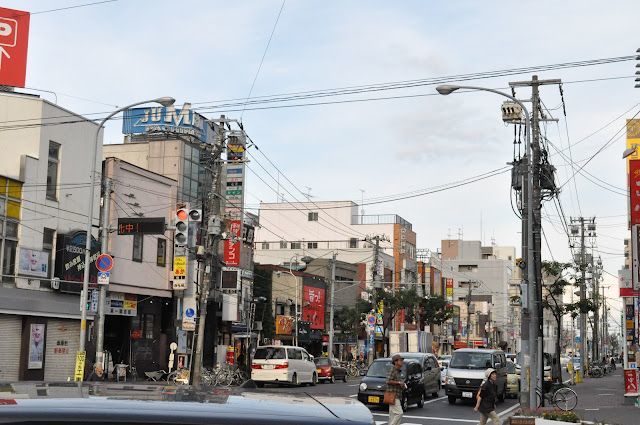
We found parking for Penelope and forged out into the city, meeting up with both the ALTs from Sapporo as well as the ones that travelled from all over Hokkaido to take part in the night ahead. First stop was a hole-in-the-wall bagel-joint-slash-café where we ate our fill of (sadly not Montreal-style) bagels topped in various condiments all of which I could almost assume were grown and produced on the premises – avocados and tomatoes on the one hand, blueberry cream cheese on the other. Our bellies full, the sun beginning to set, we boarded a subway for the downtown core.
Subways are subways everywhere, whether you call them subways or метрополите́н or métros or 地下鉄. Subway stations are all the same, and subway trains, within reason, are all fairly similar. I’m coming to believe that subways, like mechanical clocks, the internal combustion engine, and “yo mama” jokes, are mature technologies, in that, try though the experts might, there is almost no way that they can be made any better. So if you have ridden the subway in literally any other city in the world, you know what it is like to ride the subway in Sapporo. Just imagine that the subway car is inexplicably filled with Japanese people.
We emerged into Odori Park, a long, narrow park the width of one city block and the length of twelve. The park is currently playing host to the Autumn Festival, a perfect excuse to erect kiosks selling corn and Surf-Clam soy Sauce-taste Noodle. I drank a beer the size of my head and tasted cheesecake claiming to be made with camembert, but almost certainly wasn’t. Making our way down the length of the park, we saw a Japanese clown (which is like an American clown except a lot less costume and a lot more ponytail on the wrong side of his head) swallow a balloon whole, we debated vigorously what happened to the balloon inside him, we tried to imagine the logistics of clenching your esophagus hard enough to pop the balloon, and discussed the digestibility of rubber balloons, or if, perhaps, the clown had just ingested a special biodegradable balloon made of soy or grass or something chemically edible. That this clown occupied a good deal of conversation is the point
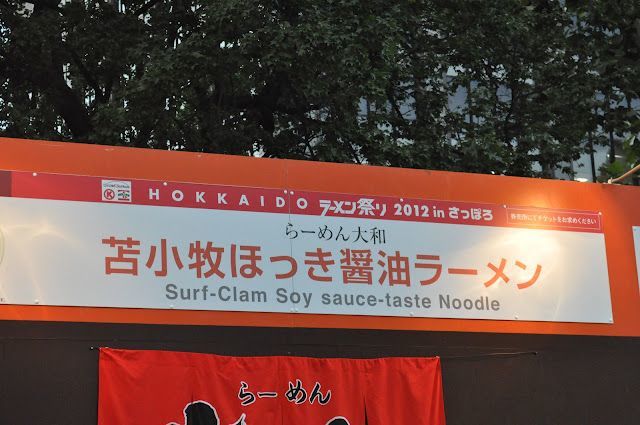
From Odori Park it was a quick jaunt by taxi to the Sapporo Bier Garten (sic), which isn’t a garden at all. Instead, we found ourselves seated in a long, high-ceilinged room thronged with tables at each of which was a small gas element and a cast-iron skillet on which to cook our Genghis Khan – thin slices of what is meant to be lamb but for us was beef and pork, along with bean sprouts and cabbage and onions. This we washed down with locally brewed beer, great company, and greater conversation. The scene seemed to be taken wholesale from a Super Bowl commercial.
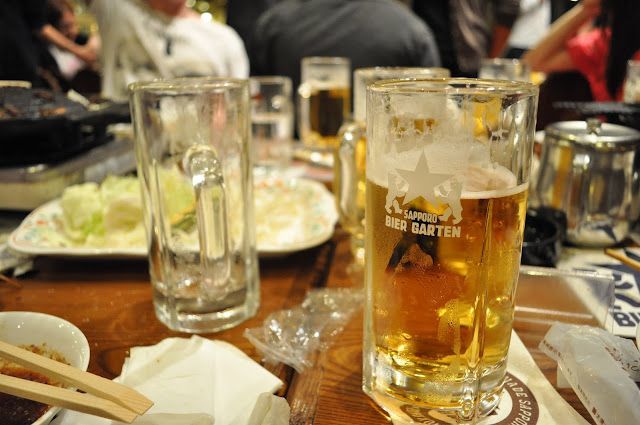
From the Bier Garten we made our way to Susukino, Sapporo’s entertainment district. Take a moment and consider the fact that this city has an entertainment district – a neighborhood dedicated solely to the purpose of consuming, of imbibing or ingesting; a workforce dedicated to putting food and drink, video and music, light and sound and deafening good times into people’s immediate vicinity. Various sources seem to suggest this isn’t the only kind of entertainment being offered in Susukino, but being a rowdy group of foreigners of various nationalities and levels of inebriety, I don’t doubt those doors would have been closed to us even if we were inclined to seek them out.
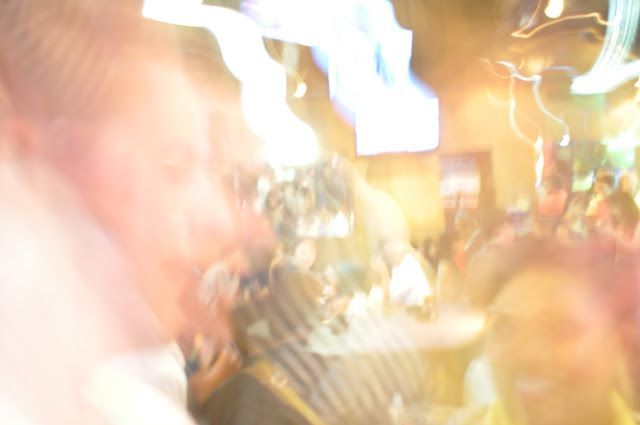
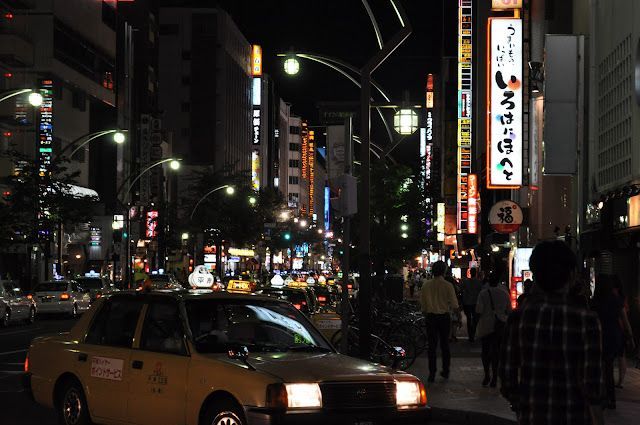
Instead, looking up at the lights and sounds and spying a building-top Ferris wheel, we marked it as our goal. We wandered through an empty building looking for an elevator that would take us to the wheel in the sky, eventually jamming ourselves in amongst other late-night revelers, the elevator going characteristically silent as no one wanted to raise their voice against the low drone of the ascent. Back out into the hallway and directly onto the rooftop we went, boarded the little gondola and lofted ourselves clear into the sky. We climbed almost silently, as if the modicum of inertia acting upon our bodies was enough to carry us onward; we were hoisted up above the rooftops and the Technicolor spectacle below, Susukino at our feet and glowing in all of her electric neon glory, purples and reds and yellows flashing and dancing up into the night. In every direction glowed pinpricks of light, growing sparser as they grew more distant. We couldn’t see a single star above us, but looking out towards the nighttime urban sprawl of Sapporo, looking out to the plains beyond it, I could imagine the high pressure sodium vapor glow of the myriad streetlamps as yellow dwarfs, the landscape here and there dotted with the white-hot giants of metal-halide stadium lights or the dimmer halogen glow of headlamps. At the very top the world seemed to hang suspended for a moment as we crossed the zenith, everything astronomically frozen, movements far too precise and cosmically distant to observe; and then we began to make our way down again, descending like astronauts back to Earth, albeit without the ionizing speed.
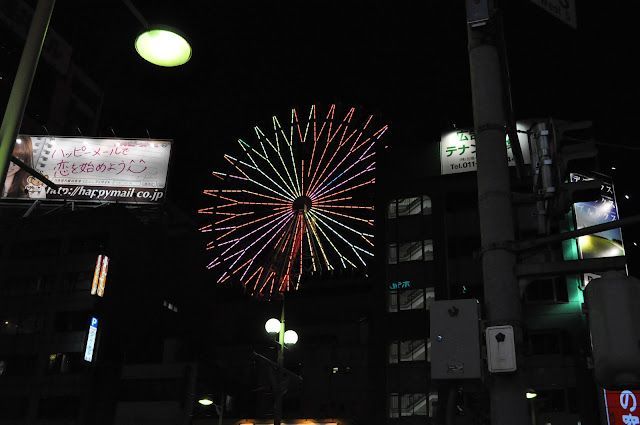
Next on the docket was a club called A-Life, which is much the same as every other club in the world. I get the feeling that these, like subways, are mature technologies; though they could be made better by the removal of extortionate covers. So instead of detailing our mind-numbingly frantic partying at the club, I will instead list ways that subways are A-Life are alike: they are both underground, loud, and crowded with people, and sometimes you see strange things happening. I can’t think of any other ways.
The ride back was quiet and rainy. The world splashed up about Penelope’s tires, dulled by low-lying clouds and fog in the mountains. The air on Sunday night was ever so slightly more brisk than it had been Saturday morning, the leaves a little bit softer, a little bit more yellow. As I write this, the rain is still coming down, the mist is still hanging low in the mountains and the mercury riding low in the thermometer. The gusts of summer, pulling the sweat and cares from our golden skins, are things of 2012’s past, and now the air stirs quietly, if at all, with the first swells of autumn across the Okhotsk.
[insert awful “Winter is coming” joke here]